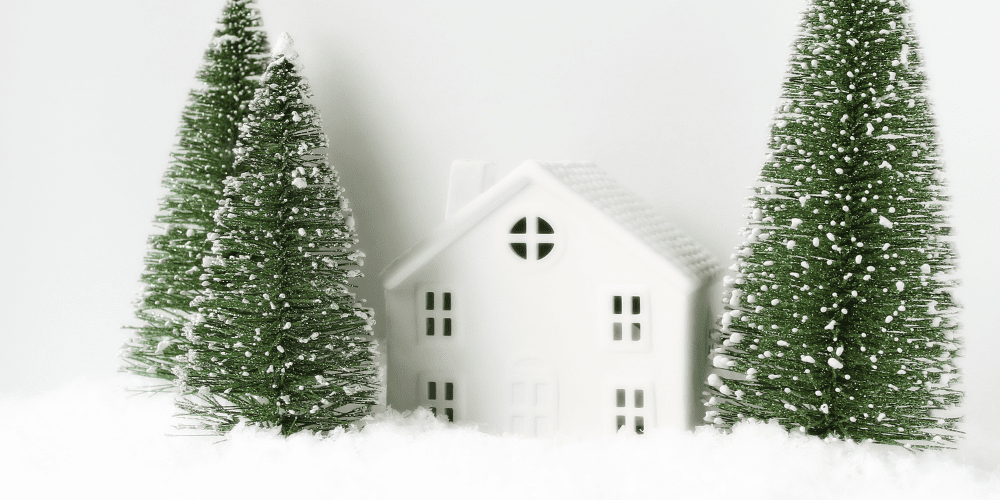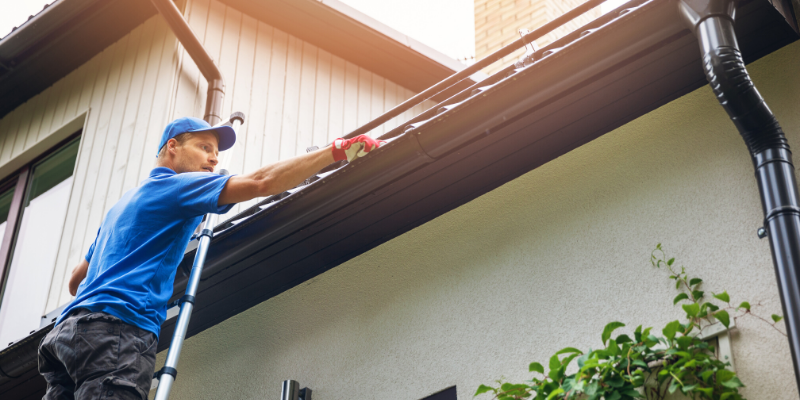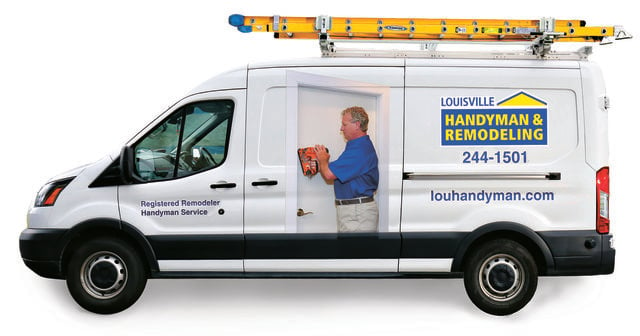Winter Maintenance Checklist for Your Louisville Home
- 15 Dec, 2022
- •
- 0 Comments
You go to the doctor for wellness checks. You go to the dentist for regular cleanings. You take your pets to the vet for their yearly exams and shots. So why wouldn't you do the same for one of your biggest investments—your house?
If you don't have an established winter maintenance schedule and winter home maintenance checklist, you should. Taking care of the winter maintenance in your home should be as routine as taking care of your health. So...you are probably wondering, "How do I take care of my house in the winter?"
That's easy...you need a winter home maintenance checklist.
We are here to give you some winter home maintenance tips, so you know exactly what you should do before the temperatures drop and the snow falls. We will also give you some other tips pertaining to winter home preparation and maintenance

What Should I do to Protect my House Before Winter?
Before winter sets in, think about all the functions of your home. You will then use that information to develop a winter checklist that works for your home and the systems and features it includes. Once you have a home-specific winter maintenance checklist finished, you are halfway finished with the hard work of preparing your house for winter.
How Do I Freeze-Proof My House?
Start with the exterior of your home because that's where most of the work will need to be done. In the next section, we will talk about how to keep the interior of your home warmer and more energy-efficient during the winter.
Landscaping
First, consider trimming your trees back. To keep your landscape healthy, you should only trim your trees in the late winter when they are dormant unless they are touching your house. You will need to think about a more complete trim towards the end of the winter in order to be in even better shape next year.
Next, rake the leaves. Neglected trees can be hazardous because the wind and the weight of the ice can cause them to fall onto your home, and the leaves are a fire hazard. If hot embers from a fireplace escape from someone's chimney and fall into a pile of dead leaves, it could easily ignite a fire.
Lawn
Aerate your lawn in the late fall to alleviate some of the compression in the soil and allow your lawn to go dormant during the cold weather. Aeration adds tiny holes to break up the thatch in your lawn. A lawn care professional can help with the process if you don't have the proper equipment.
Exterior Faucets and Exposed Pipes
First, remove all hoses and store them for the winter. Hoses left connected to your exterior faucets can cause pipes in the house to burst. If you have frost-free style faucets, you can stop there. If you don’t have frost-free faucets, you should cover your exterior faucets and any exposed pipes with insulated faucet covers and foam pipe insulation. This will help prevent your pipes from freezing and bursting. You can buy these products at any home improvement store. Alternatively, have your favorite Louisville handyman service do it for you.
Concrete Patios and Driveways
Apply a concrete sealer to any cracks on your patios and driveways. This will prevent water, and ultimately ice, from getting into those cracks, expanding and making them worse. Ideally, this should be done in October when the temperatures are still moderate.
Gutters and Downspouts
It's extremely important to clean your gutters and downspouts. This is because any debris inside them retains water. Then, when it gets below freezing, that water and debris will freeze, and the weight of all that ice and debris could pull your gutters and downspouts away from your home, bringing the attached wood and soffits with it. And if that doesn't happen, at the very least, all that debris and standing water will eventually rot your wood and trim.
Gable Vents and Soffits
Check your gable vents to make sure they are intact and that there is no missing screening. These types of openings allow critters access to your home, creating more hazards and headaches. Also, check your soffits for any rotted wood or openings and repair them if needed.
Pool and Sprinkler System
Shut down your pool and prepare it for the winter. Then, make sure your sprinkler system is properly shut down as well. Calling a professional for this is a good idea because the sprinkler lines need to be blown out to keep them from freezing.
 How Can I Keep My House Warm in the Winter?
How Can I Keep My House Warm in the Winter?
Here are the steps you should consider taking to keep the interior of your house warm in the winter.
HVAC Inspection
Winter furnace maintenance is a hugely important first step in winterizing your home. It's best to have a professional come out to inspect your HVAC system in the spring and again before the winter sets in. Nothing is worse than turning on the heat for the first time in winter and finding an unexpected problem. Having a professional check on your furnace will also catch small problems that can easily be fixed before they turn into major and more expensive replacements.
Winterize Your Roof
Many of the steps you have taken to protect your home's exterior will assist in winterizing your roof. Proper care of your gutters and landscaping keeps your roof clear. Inspect your roof before winter for damage, especially around skylights and flashing.
Insulation
Adding insulation will keep your home warm during the cold months. If you feel that your home is under-insulated, concentrate your efforts first on your attic, as heat is lost when it rises. Address and seal any leaks or cracks you find in your attic before insulating. Consider installing batt or blown-in insulation to any areas that feel extra drafty.
Windows and Doors
Check all the seals outside and inside your home around your windows and doors. If you find issues, caulk around the windows and replace the door seals and/or weather stripping as needed.
Chimney Cleaning
If you're not sure how to check your fireplace, have your chimney cleaned and inspected by a professional before you use it for the first time in the season. This will make sure it is safe to use versus being a fire hazard. And while you're at it, why not go ahead and order the firewood you are going to need for the winter?
Reverse Your Ceiling Fans
Use the switch on your ceiling fans to reverse the blades. This will cause the blades to run in a clockwise direction. When you turn on your heater, the fan will then produce an updraft and push the heat that has risen to the ceiling downwards into the room where it's needed.
Test the Smoke and Carbon Monoxide Detectors and Replace the Batteries
Be sure to test all your smoke and carbon monoxide detector batteries. Then go ahead and replace the batteries even if they are working. The batteries should be changed at least once a year. Be sure to place a carbon monoxide detector near all potentially hazardous places, such as your fireplace and furnace.
Miscellaneous Winter Prep
- Clean and drain the gas from your lawn equipment and prepare them for winter storage.
- Cover your patio furniture.
- Order your sidewalk salt or ice melt.
- Test your sump pump.
How Do You Winterize an Empty House?
If you are going to be leaving your house empty for the winter season, here are some home winterizing tips from an experienced team of professionals.
- Set your thermostat to 50 degrees or so and open the cabinet doors under the sink and laundry areas. This will help keep your pipes from freezing.
- Shut off the water at the main.
- Turn off the gas.
- Unplug all your electrical devices and appliances.
- Check your sump pump to make sure it's functioning properly.
- Close the fireplace damper.
- Check and clean your gutters and downspouts.
- Remove all refrigerator and freezer items.
- Put all non-perishable foods into sealed containers.
You should also stop your mail, inform your immediate neighbors of your absence, store your patio furniture, and make sure all the windows are closed and locked. Then don't forget to set your alarm system before you leave.
What's Next?
If you would like more information about getting your Louisville home ready for the winter, or if you need some help accomplishing any winterizing tasks, please Contact Louisville Handyman & Remodeling. We are here to help you with all of the winterizing tasks on your list!








